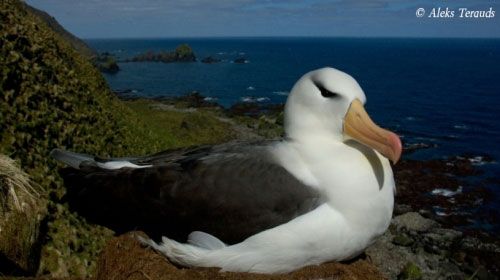Ben Raymond (Australian Antarctic Division) and colleagues have modelled the possible outcomes of eradicating introduced mammals on Australia's sub-Antarctic Macquarie Island, home of ACAP-listed albatrosses and petrels, publishing in the Journal of Applied Ecology early this year.
The paper's summary follows:
"1. Invaded ecosystems present complex management issues. This problem is exacerbated in many situations by a lack of knowledge about the ecosystem. However, delaying conservation action to collect further data and so reduce such uncertainty is often either impractical or inadvisable.
2. The Macquarie Island Pest Eradication Project, currently underway, is attempting to eradicate rabbits, rats, and mice from the island. We undertook qualitative modelling of this project, examining a range of likely outcomes and their possible ecological consequences. The results were aggregated across a large number of possible models, in order to account for uncertainty concerning interactions within the ecosystem.
3. The results strongly support the current actions of simultaneous eradication of all three pest species, as simulated eradications of only one or two generally led to continued impacts on the island's native biota. The results also provided support for the anticipated positive outcomes of the project, with predicted recoveries of tall tussock vegetation, and burrow- and surface-nesting seabirds.
4. However, the model predictions also highlighted potential risks: the eradication of mice from the island may not succeed, due in part to the structural position of this species within the ecosystem. Successful eradication of all three target species could potentially release the self-introduced, non-native redpolls and starlings, allowing expansion of their populations, with possible impacts on macro-invertebrates and vegetation.
5. Synthesis and applications. These results demonstrate that qualitative modelling approaches can in some cases deliver consistent results, despite high levels of uncertainty regarding interactions within the underlying ecosystem. Such outcomes can provide assistance in the development of strategic contingency plans and ongoing future management action."
Reference:
Raymond, B., McInnes, J., Dambacher, J.M., Way, S. & Bergstrom, D.M. 2011. Qualitative modelling of invasive species eradication on subantarctic Macquarie Island. Journal of Applied Ecology 48: 181-191.

Black-browed Albatrosses breed at Macquarie Island.
Photograph by Aleks Terauds
Click here to read the latest on ACAP Latest News about the Macquarie Island Pest Eradication Project: no rodents have been seen post-baiting so far.
John Cooper, ACAP Information Officer, 21 November 2011

 English
English  Français
Français  Español
Español